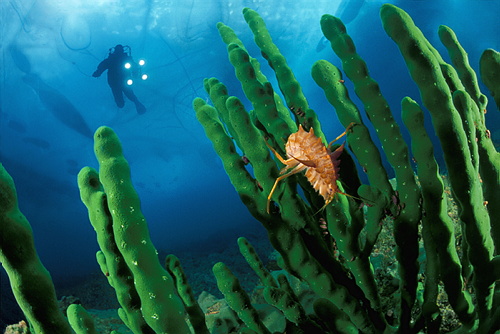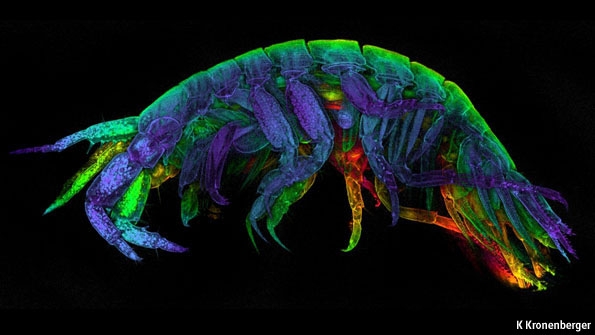As a long-time afficianado of the amphipod crustaceans I’ve come to terms with being alone in a crowd, having as it were a more rarified taste in biophilia than the average whale-hugger lover of sea life. Sure, they’re submicroscopic, sometimes pesky (crawling into your ears while working underwater, for example), and often devilishly difficult to identify. But amphipods have their own offbeat charm. And if you go to the right places — Lake Baikal in Siberia, for example, where an explosive evolutionary radiation has produced hundreds of species that own the place — amphipods are a force to be reckoned with. I spent a month on, and in, Lake Baikal hunting amphipods in 1995 and it was surely the biggest adventure of my life. But that story will have to await another day.

Anyway it’s not just the remote steppes of Siberia. In fact, amphipods are more or less everywhere there is water. And they are often fundamentally important to ecosystem processes. They eat algae, fish eat them, we eat fish — you get the picture. So, it’s always a treat to hear that civilians have glimpsed the wonder of these humble creatures.
The latest news comes from their amazing alchemical talents. Many amphipods in the superfamily Corophioidea (I believe that is the currently accepted taxon, cumbersome as it may sound) produce a silky secretion from glands at the bases of their legs, which allow them to fashion little tubes in which to hide from predators, stay moist at low tide, enjoy intimate moments with their mates, and generally go about their retiring lifestyles.
It appears now that this amphipod silk has amazing properties and is a potential new target of industrial biomimicry. No less a venerable publication than the Economist has become enamored of the critters, thanks to new research by Katrin Kronenberger and colleagues from the University of Oxford:
“Beyond its curiosity value, the discovery of Crassicorophium silk could have practical benefits. There is great interest, in biotechnological circles, in using silk more extensively as an industrial material. Its lightness, flexibility and strength would make it widely deployable. Adding Crassicorophium silk—or, at least, knowledge derived from its analysis—to the mix would extend that range. Dr Vollrath, for example, suggests that Crassicorophium silk’s tolerance of salt water means it might find uses in medical applications where it would come into contact with salty bodily fluids. Thus, with luck, can curiosity-driven research of the most esoteric kind lead to good, solid human benefits.”
What’s next — amphipod lingerie?
[The image at top is not its real hue, by the way — though amphipods can indeed have truly fabulous color schemes]
Original source: Kronenberger K, Dicko C, Vollrath F. 2011. A novel marine silk. Naturwissenschaften DOI: 10.1007/s00114-011-0853-5.

Leave a Reply